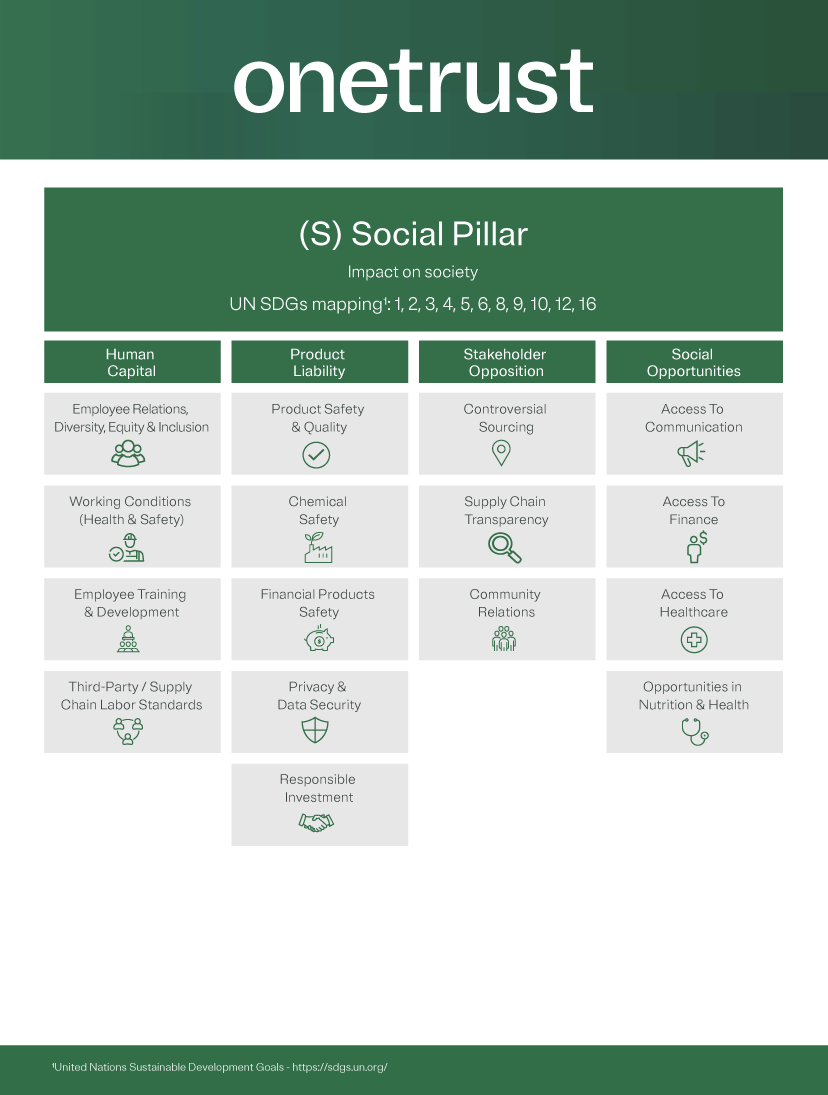Today’s society is more willing to be vocal and hold anyone accountable than a generation ago. Even before the death of George Floyd lit a match for social justice movements around the world, activism was on the rise. Examples include Fridays for Future, Extinction Rebellion, #MeToo, March for Science, the Women’s March, March for Our Lives, and more. Businesses around the world need to sit up and listen because these are their employees, their investors, their customers, their partners. They have found their voice, and are speaking through protests, social media, boycotts, resignations, and more. On the bright side, ethical and sustainable businesses have a real opportunity to be a force for good while gaining a competitive advantage. They can attract and retain the best talent and partners, acquire more customers at lower costs, attract investment with better terms, and more. In this continuation of our ESG 101 blog series, we’ll be taking a closer look at the S, or Social, in ESG: What it is, why social impact is important, and how to map ESG social to Sustainable Development Goals (SDGs) and incorporate it in your sustainability strategy.
Society is demanding that companies, both public and private, serve a social purpose. To prosper over time, every company must not only deliver financial performance, but also show how it makes a positive contribution to society. – Larry Fink, Chairman and CEO, BlackRock
Download the infographic to explore common ESG metrics and how to map them to the UN SDGs
What is the S in ESG? What does social in ESG mean?
The S in ESG stands for Social. At its core, ESG social is about human rights and equity – an organization’s relationships with people, as well as its policies and actions that impact individuals, groups, and society. In a business context, it examines all people interactions against principles of ethics, justice, and care for wellbeing. This can be as basic as how they treat their employees or as far-reaching as their impact on customers, partners, and other stakeholders. It considers topics like inequality, working conditions, human rights, product safety, community relations, supply chain transparency, and more. ESG Social performance indicators can include things like diversity, income equality, workplace injury rates, philanthropy, and labor practices of suppliers. The goal of these factors is to measure how well the organization is meeting its human obligations in operations, global supply chains, and local communities. Organizations that successfully adopt the social pillar of ESG recognize that business operates within the context of a society that is intrinsically inequitable. This means that some individuals are subject to more systemic inequalities and injustices than others, and businesses have a responsibility to address the inequities within their locus of control. Otherwise, they become participants in a system that upholds them.
“Directly or indirectly, companies affect what happens to employees, workers in the value chain, customers and local communities, and it is important to manage impacts proactively.” – UN Global Compact
Key drivers shaping ESG social impact goals – why is social impact important?
ESG social topics may not be as easy to measure as environmental issues, but there are several trends driving how companies define and report on social impact to their stakeholders. In many parts of the world, social issues have been enacted into law (e.g., minimum wage, worker health and safety standards, anti-slavery regulations, whistleblower protections, data privacy, etc.) Additional drivers may include customer and partner expectations, employee activism, boycotts, pressure from NGOs and lobby groups, etc. Being a good corporate citizen can also bestow benefits such as cost reduction and competitive advantage. This may be why philanthropy and workplace giving have been around since the early 1900s as a way for companies to give back. Over time, these charitable initiatives tended to merge with other business areas such as compliance, risk management, employee engagement, etc. and evolved into holistic corporate social responsibility (CSR) programs. Today, many companies report on their CSR program under the S in ESG.
“The most successful companies don’t target profit directly but are driven by purpose – the desire to serve a societal need and contribute to human betterment.” – Alex Edmans, “Grow the Pie”
Infographic: ESG social and UN SDGs mapping
The following infographic defines the ESG topics in the social pillar within the context of business operations.









